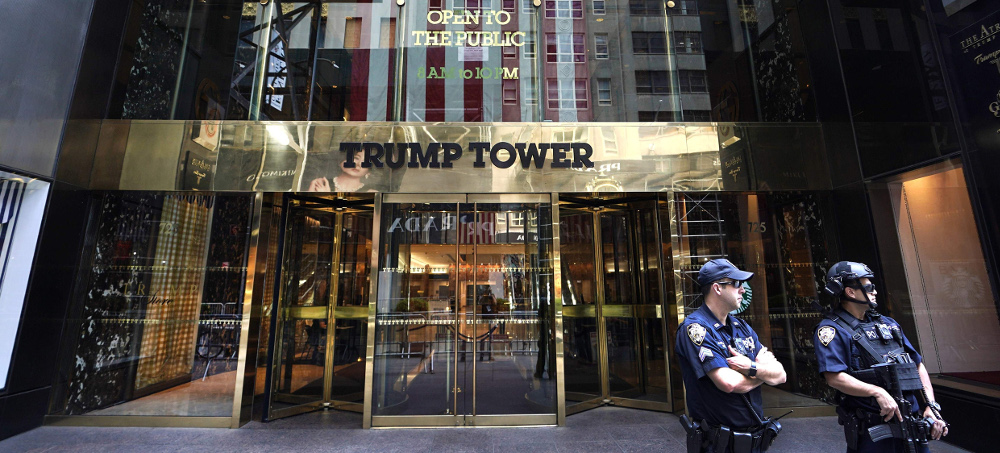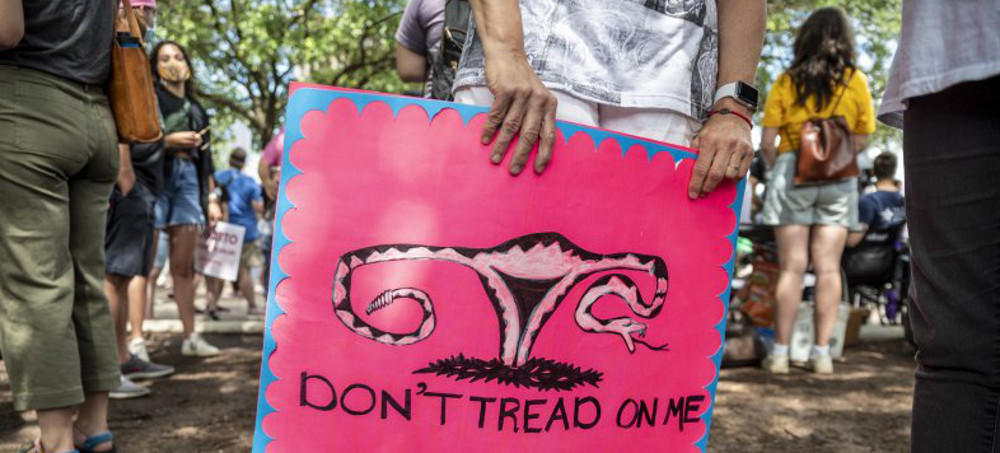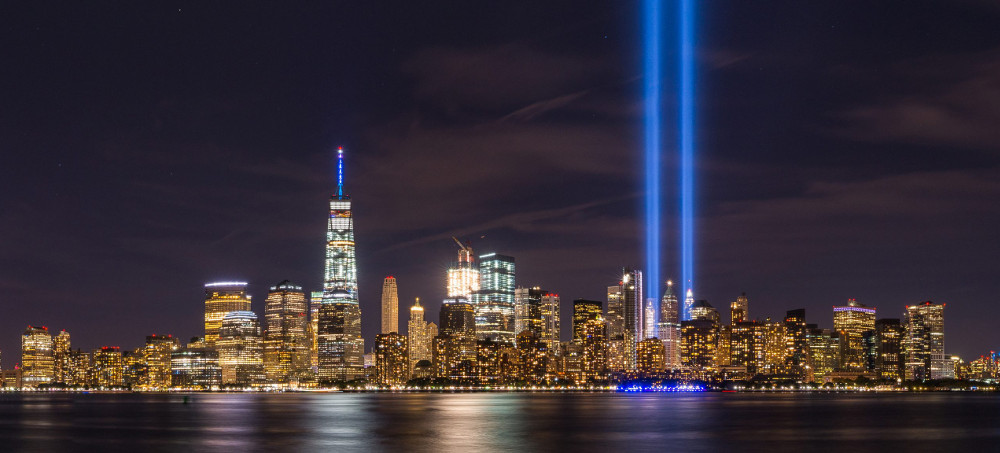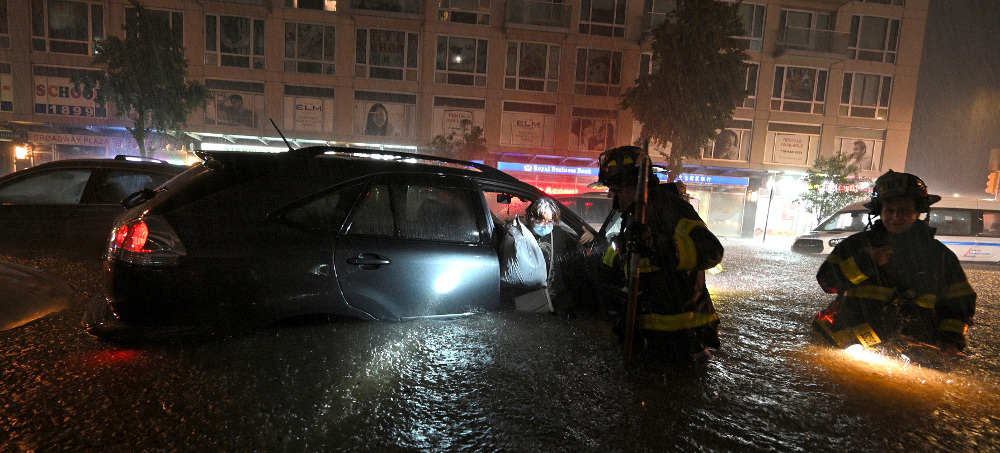Tomorrow we begin our September funding drive. The support we receive is directly connected to what we are able to as an organization.
We are battling to maintain our budget. Really focusing at this point on improving the fundraising numbers.
#FundraisingMatters — Believe it.
Marc Ash
Founder, Reader Supported News
Follow us on facebook and twitter!
Live on the homepage now!
Reader Supported News
 'GOP officials in at least seven states, including Arkansas, Florida, South Carolina and South Dakota, have suggested they may review or amend their states' laws to mirror Texas's legislation.' (photo: WP)
'GOP officials in at least seven states, including Arkansas, Florida, South Carolina and South Dakota, have suggested they may review or amend their states' laws to mirror Texas's legislation.' (photo: WP)
 People participate in a 9/11 memorial event. (photo: ABC)
People participate in a 9/11 memorial event. (photo: ABC)
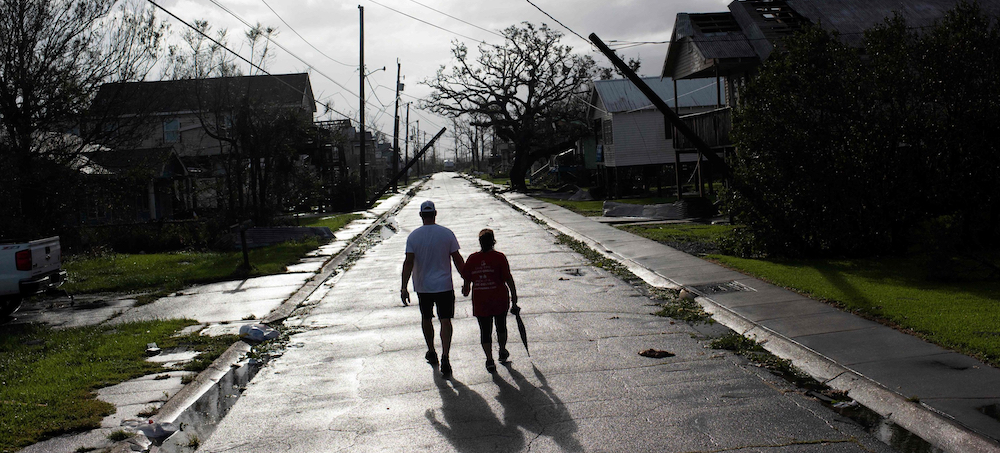 More than one million people in the region lost power during Hurricane Ida. (photo: AP)
More than one million people in the region lost power during Hurricane Ida. (photo: AP)
 U.S. Customs and Border Protection officers direct vehicles reentering the U.S. from Canada in Detroit on August 9, 2021. (photo: Matthew Hatcher/Getty Images)
U.S. Customs and Border Protection officers direct vehicles reentering the U.S. from Canada in Detroit on August 9, 2021. (photo: Matthew Hatcher/Getty Images)
 Israeli soldiers detaining a Palestinian boy. (photo: Reuters)
Israeli soldiers detaining a Palestinian boy. (photo: Reuters)
According to eyewitnesses, Omar had been watching — peacefully, it must be said — a protest against the Israeli-led siege of Gaza. An Israeli army sniper calmly and deliberately – acting under the orders of his commanding officer – looked through his gun sight and fired a live round through the boy’s neck. Omar lost consciousness straight away.
His death means that Israeli army killers have now ended the lives of 73 Palestinian children in the West Bank and Gaza Strip this year alone.
“Israeli forces routinely shoot and kill Palestinian children with impunity in circumstances that suggest unlawful and wilful killings,” said Ayed Abu Eqtaish of the human rights group Defence for Children International Palestine. Abu Eqtaish called for accountability “by ending weapons sales and support for Israeli forces.”
The siege of Gaza is a lengthy and ongoing Israeli injustice. Even before it was fully imposed in 2007, Israel had for years decreed military closures of the territory, shutting down its crossing points at will. The siege has resulted in the entirely predictable collapse of the Palestinian economy in Gaza.
It is no wonder that ordinary Palestinians all over the territory have risen up against this strangulating injustice, and are once again marching in peaceful protests against the siege. This, remember, is despite the very real possibility that they could be shot and killed, or suffer life-changing injuries simply for standing up for their legitimate and very basic human and political rights.
More than two million people live in the crowded coastal enclave today, half of them children. Around 80 per cent of the population are refugees and their descendants from inside what is now known as Israel; their home towns and villages are within historic Palestine, which has been occupied since 1948.
Between 1947 and 1949, Zionist militias deliberately and systematically drove out around 800,000 Palestinians. Although they have a legitimate right to return, they have never been allowed to do to, solely because they are not Jews.
Today, the only crossing point that Israel does not have full control over is in the southern Gaza town of Rafah leading to and from Egypt. However, the US-backed military dictatorship which has ruled Egypt since the coup in 2013 is also a willing accomplice in the siege. Another example of Egyptian complicity was witnessed last week.
Palestinians once again protested at the boundary fence on Wednesday 25 August. Israeli soldiers once again fired live ammunition at the demonstrators; their officers had reportedly ordered their troops to behave “more aggressively” towards the Palestinians.
Five of the injured were shot with live ammunition. Journalist Taha Raafat Baker, 32, was hit in the leg by a tear gas canister; another child was among the wounded, said Palestinian human right group Mezan.
Egypt responded to the Israeli attacks on Palestinian protestors by helping the Israeli killers and punishing their Palestinian victims. The regime in Cairo imposed an indefinite closure on the Rafah crossing. The Salah Al-Din goods crossing – where only limited items are permitted to enter Gaza at the best of times – is also closed.
Hundreds of Palestinians are now completely stranded in Egypt. Many are running out of money and have no means to access family support networks; international money transfers to and from Gaza are usually impossible to make.
Yet Egypt is only one component of the international conspiracy against the civilian population of the Gaza Strip. As Tamara Nassar, my colleague at The Electronic Intifada has noted, the UN and Qatar are also colluding in the siege. Both have agreed to implement a programme which gives Israel a veto over the list of those Palestinians who will and will not be given food aid.
This is collective punishment, yet another of Israel’s many war crimes. How many more will it be allowed to commit with impunity before the siege of Gaza is brought to an end? This must happen unconditionally and without delay.
The views expressed in this article belong to the author and do not necessarily reflect the editorial policy of Middle East Monitor or Informed Comment.
 Many cities are navigating declining water infrastructure. (photo: John Walker/The Fresno Bee)
Many cities are navigating declining water infrastructure. (photo: John Walker/The Fresno Bee)
Simply allocating more money won’t necessarily solve the problem.
Often, the tap water where she lives is questionable, she says. And sometimes, it’s straight-up brown.
A longtime resident of Jackson, Mississippi, Bertram Roberts has dealt with the city’s water issues since she was a college student. In her time there, century-old pipes in Jackson have meant numerous water main breaks, recurring boil water notices, and constant anxiety about water quality for many of its residents.
To cope, Bertram Roberts and her family rely on 5-gallon jugs of bottled water for drinking and cooking, and filtered water for showers and baths.
“I’ve lost track of the number of boil water notices we’ve had,” says Bertram Roberts, executive director of the Yellowhammer Fund, an abortion rights group.
Jackson’s problems — which have long affected the southern and western parts of the city — came to a head this past winter when an unexpected cold snap caused pipes to freeze and burst, leaving roughly 40,000 residents without any water for more than two weeks. In the interim, residents used disinfectant to wash their dishes, snow to flush their toilets, and baby wipes to keep themselves clean. Local organizers, meanwhile, rallied to bring in pallets of bottled water, which frequently sold out in nearby stores.
“It was crazy,” says Morris Mock, a board member for the grassroots organization Mississippi Rising Coalition. “You had mud, [or] whatever gunk, coming out of the faucets.”
Jackson, a majority-Black city, is among a number of places across the country struggling with aging infrastructure and water access, problems which have had a disproportionate impact on communities of color. As the Christian Science Monitor reported, a 2019 report by the Natural Resources Defense Council (NRDC) found that “drinking water systems that constantly violated federal safety standards were 40% more likely to occur in places with higher percentages of residents of color.”
Now city officials are pinning their hopes on Congress’s infrastructure plan. The $1 trillion bipartisan proposal, which passed the Senate on August 10 and is waiting on a vote in the House, includes about $48 billion in new spending for drinking water and wastewater projects. It wouldn’t necessarily solve all the city’s challenges — Jackson Mayor Chokwe Antar Lumumba estimates that repairs and maintenance could cost as much as $2 billion — but it could provide a boost that’s been needed for years.
Whether the money has that effect, however, will depend heavily on if the funding in the bill actually winds up making it to the city.
Jackson’s water infrastructure is simply too old
Many cities are navigating declining water infrastructure, from pipes in Atlanta that haven’t been replaced for decades to lead service lines in Chicago leeching contaminants into the water.
Jackson’s recent water outage, while it marks one of the most extreme and high-profile failures of the US’s water systems, is indicative of this broader problem. The February shutdown — which lasted nearly a month for some residents — was the longest the city has ever seen, but it followed similar lapses in 1989, 1994, 2010, 2014 and 2018.
Much like other places, the issue Jackson’s facing has long been the same: Its infrastructure is simply too old.
“In some areas, we’ve got 100-year pipes,” says Charles Williams, former head of the Jackson Public Works Department. “They’ve been in the ground for a very long time, and we’ve been patching the system due to lack of availability of funds.”
As a result, issues like water main breaks have become more common, contributing to stoppages in service and cracks that make it easier for contaminants to get into the water. Williams estimates that in the past year alone, there have been more than 100 water main breaks.
Equipment at the city’s water treatment facilities — including machines at the O.B. Curtis Water Treatment Plant, which froze during February’s winter storm — are old too, causing further delays in making sure the water is clean and drinkable. Much of this equipment hasn’t been properly weatherized either, so it’s especially vulnerable during cold snaps.
“If you don’t make the critical upgrades and the desired maintenance, it’s going to break,” Williams says.
While the EPA has deemed Jackson’s water safe to drink as long as there isn’t a boil water notice, it’s also called for major repairs at its treatment facilities in order to better address potential contaminants. In 2015, annual water reports showed that lead levels in the city’s water were nearly 50 percent higher than the acceptable standard, the Clarion Ledger reported. Government analyses in June 2016 also found that more than a fifth of Jackson homes had water that exceeded the federal government’s “action” lead level, according to the Guardian.
Earlier this year, city officials laid out a plan for increasing staffing at treatment plants and fixing machines there. The estimated costs include $70 million to address maintenance at two treatment plants and $100 million to repair the distribution system — though Williams notes that the full price tag of a water overhaul is likely to be much higher. (Lumumba’s $2 billion estimate for complete repairs to Jackson’s water and wastewater systems easily dwarfs the city’s annual $300 million budget.)
One reason the city hasn’t been able to fix its water issues is that it just hasn’t had the funds to do so. Over time, the city has seen its population and tax base decrease, significantly reducing its revenues for utilities and other services, as the Christian Science Monitor explained:
As in other metro areas nationwide, school integration led to white flight, and in later decades other factors including rising crime rates fueled a further exodus to the suburbs among Jackson’s white and Black middle class alike.
With them, too, went a large portion of a tax base that Mississippi’s largest city has historically depended upon.
Federal funding for water infrastructure has also sharply dipped since the 1970s, forcing states and localities to try to cover these gaps. (According to the US Water Alliance, federal funding accounted for 63 percent of capital spending on water infrastructure in 1977, a number that’s since dwindled to less than 10 percent.)
To raise more infrastructure funds, Jackson previously instituted a 1 percent hike to its sales tax in 2014, which brings in roughly $14 million a year. It also received $47 million as part of the American Rescue Plan earlier in 2021, some of which is being allocated to water-related repairs. And state lawmakers granted Jackson $3 million in funding for water plant fixes.
These measures still aren’t enough to solve Jackson’s water problems, though. And given the funding shortages it’s experienced, the city has focused on using its limited water budget to stem the damage rather than fixing it wholesale.
More federal funding could be significant in helping the city address the overwhelming expenses it still has, if it’s properly targeted. ”This kind of package from the federal government is truly our only hope,” Jackson City Council President Virgi Lindsay said recently.
The infrastructure bill may not be targeted enough to be effective
Getting much-needed funding to Jackson will depend on how Mississippi ultimately chooses to dole out its infrastructure money.
The EPA manages two programs to send federal dollars to states to help fix their water systems: the Drinking Water State Revolving Fund and the Clean Water State Revolving Fund. But the amount they typically parcel out is small compared to the scope of needs in a city like Jackson. Under the Senate-passed infrastructure plan, much of the federal money for water systems would flow through those programs, which are administered by the states, rather than going directly to cities and municipalities in need.
In 2021, the federal government sent $1.1 billion to states via the Drinking Water State Revolving Fund (DWSRF) and an additional $1.6 billion via the Clean Water State Revolving Fund (CWSRF). Mississippi received about $26 million of those funds, which it is distributing to local governments in the form of loans and grants. (Because of how the state revolving funds are set up, they also include more money than the annual federal allocations places receive. In total, Mississippi’s drinking water fund has roughly $37 million to distribute in 2021, for instance.)
According to the Associated Press, “Jackson has received almost $20 million over the past four years and is seeking an additional $27 million [in 2021]” from the DWSRF.
In the past, residents and organizers have raised concerns about whether Jackson’s water needs were getting adequate attention from the state government: During February’s water crisis, Mississippi officials moved slowly to submit a disaster declaration or offer additional aid to the majority-Black city.
And while Jackson received $47 million in federal stimulus funds from the American Rescue Plan, the state approved only $3 million of another $47 million in funding that the city had asked for to recover from its water emergency, a situation that has led some residents and activists to question if racial bias has been playing a role in some officials’ treatment of the city. Previously, the state legislature sunk another proposal for a sales tax increase to raise more infrastructure funds as well.
“If it was a majority-white city of the same size, I don’t think people would have drug their feet to come help,” Bertram Roberts says. The governor’s office did not immediately respond to a request for comment. Mississippi Lt. Gov. Delbert Hosemann has pointed to how much federal money the city was poised to receive when discussing the state’s decision to allocate just $3 million earlier this year.
Money from the DWSRF and CWSRF, meanwhile, is separate from the support Jackson got from the state and federal governments following its water emergency, and it’s allocated through state agencies.
According to data from the EPA’s Project Benefits Reporting System, which was shared with Vox by the Environmental Policy Innovation Center’s Katy Hansen, Jackson received about $20.2 million of $253.9 million in funds allocated via the DWSRF between 2010 and 2020, roughly 8 percent of the total pot of money. Jackson’s 170,000 residents also make up roughly 6 percent of the state’s total population of 3 million, though factors other than a city’s size, such as a place’s reliance on low-cost financing, contribute to need for these funds. (Data from the Mississippi Department of Health also showed that the initial loan awards for the city were $23.8 million between 2010-2020, in addition to an emergency loan it received of $467,000.)
Whether the money in the infrastructure bill will effectively be distributed to places in need like Jackson is an open question. Jim Craig, Mississippi’s Director of Health Protection, noted that state legislation would end up determining how the process would work, and added that officials have approved past loans to the city that have exceeded the $5 million maximum loan amount that had been set for the program.
A report from the Environmental Policy Innovation Center (EPIC) co-authored by Hansen, a senior water adviser at EPIC, previously looked at 10 states’ allocation of DWSRF money and found that several states struggled to deliver this aid equitably: Smaller localities and places with a higher proportion of people of color have historically received less money from the program both because they had less resources to pursue this funding and because much of it was dispensed as loans instead of grants. The study did not include Mississippi, though Sri Vedachalam, EPIC’s director of water, noted that the dynamics of the report were likely to be relatively consistent across states.
“We see this pattern where money is given to certain types of communities while others struggle to secure that type of money,” says Vedachalam. Because states have significant control over where these funds go, the boost the bill provides doesn’t necessarily guarantee that Jackson would receive sufficient extra money.
How the infrastructure bill could help
The bipartisan infrastructure plan includes about $48 billion in new funds for water-related repairs. As detailed by the US Water Alliance, there is $11.7 billion allocated to the Drinking Water State Revolving Fund over five years, $11.7 billion allocated to the Clean Water State Revolving Fund over five years, and $15 billion allocated to addressing lead service lines over five years that will be distributed via the Drinking Water Fund. There’s also an additional $10 billion total that focuses on emerging contaminants.
In all, Mississippi is expected to receive $429 million over five years for water infrastructure were Congress’s legislation to become law, the Clarion Ledger reported.
Although the federal government still gives states significant leeway to determine how Drinking Water Funds and Clean Water Funds are targeted, there are some provisions in the legislation that make it more accessible for “disadvantaged communities,” which are classified in Mississippi as having lower median income.
Nearly half of the funding for the Drinking Water Fund and the Clean Water Fund will be available as grants, which could mean that this money is more accessible to localities that can’t take on loans, including lower-income cities, for example. In the new bill, 49 percent of the new funds in both are available as principal forgiveness loans or grants. Additionally, the bipartisan bill would require that a larger proportion of the funding in the Drinking Water Fund be directed to disadvantaged communities.
The amount of money in the bill — which includes more than $2 billion in spending on both the Clean Water and Drinking Water Funds each year, with an additional $3 billion focused on lead service lines annually — is huge, but far from enough to meet the enormity of the problem.
For replacement of lead service lines alone, for example, the NRDC estimates that costs could be as much as $45 billion, so the $15 billion in the bill only begins to address that problem. For water infrastructure more broadly, the costs are also expected to be quite a bit higher than the roughly $48 billion in new funds included in the bill, notes Scott Berry, director of policy and government affairs at the US Water Alliance.
States also still have pretty broad discretion in determining which projects to prioritize. For now, while Mississippi prioritizes projects on an array of criteria including compliance with drinking water regulations and a cost/benefit analysis, there’s relatively wide latitude in what that could entail. This prioritization, depending on how it’s applied, could leave Jackson without the funding it requires, with state officials instead directing federal funds to other water projects in the state.
Still, this would be one of the largest federal investments in water infrastructure in decades, and what policy experts see as a vital “down payment” on needed repairs.
“It is one of, if not the single largest investment in water infrastructure in 50 years,” Berry tells Vox. “That’s not nothing. Will it solve all of the country’s water infrastructure problems? Emphatically no.”
The costs of failing to address America’s water struggles
The consequences of failing to address this problem are dire.
Without access to clean water, Jackson residents are forced to seek out alternative water sources, while continuing to pay sometimes exorbitant water bills. It also means people are deprived of a resource that’s fundamental to their daily lives, a stark reality in a developed country like the US.
“It was definitely shocking to know that we didn’t have clean drinking water to cook with, to just take care of our families,” said Cassandra Welchlin, head of Mississippi’s Black Women’s Roundtable, of Jackson’s February water stoppage.
And even when access to water is secure, there’s a different set of worries that people encounter when drinking contaminated water. Lead in drinking water can lead to high blood pressure, brain damage, and kidney problems, for example. Multiple studies have found that the health care risks posed by lead contaminants may have serious effects for children’s growth and reproductive health as well.
According to the NRDC, as many as 20 million people are likely getting some of their water from lead pipes, along with others who are sourcing their water via very old equipment.
In 2016, Pittsburgh detected high levels of lead in its water, spurring the city to begin replacing the thousands of lead service lines it still has. In 2021, New Orleans is still grappling with aging infrastructure and repairs to a water treatment facility that opened more than 100 years ago. In 2019, Newark also found elevated lead levels in its drinking water, pushing the city to replace its pipes with new copper ones.
Across the country, the scale of the issue is alarming: Per a report from the US Water Alliance, there are still 2 million people in the United States who don’t have access to clean running water at all, a problem that disproportionately affects “low-income people in rural areas, people of color, tribal communities, [and] immigrants.” A 2018 study led by UC Irvine water economist Maura Allaire also found that “in any given year from 1982 to 2015, somewhere between 9 million and 45 million Americans got their drinking water from a source that was in violation of the Safe Drinking Water Act,” Science reported.
The bipartisan infrastructure bill has the potential to funnel much-needed funds across the country, but precise implementation will be critical to ensure that different localities really benefit.
“I am hopeful that the federal infrastructure funding will address our needs. It absolutely has to,” says Welchlin. “We can’t afford to have another water crisis.”
Follow us on facebook and twitter!
PO Box 2043 / Citrus Heights, CA 95611




